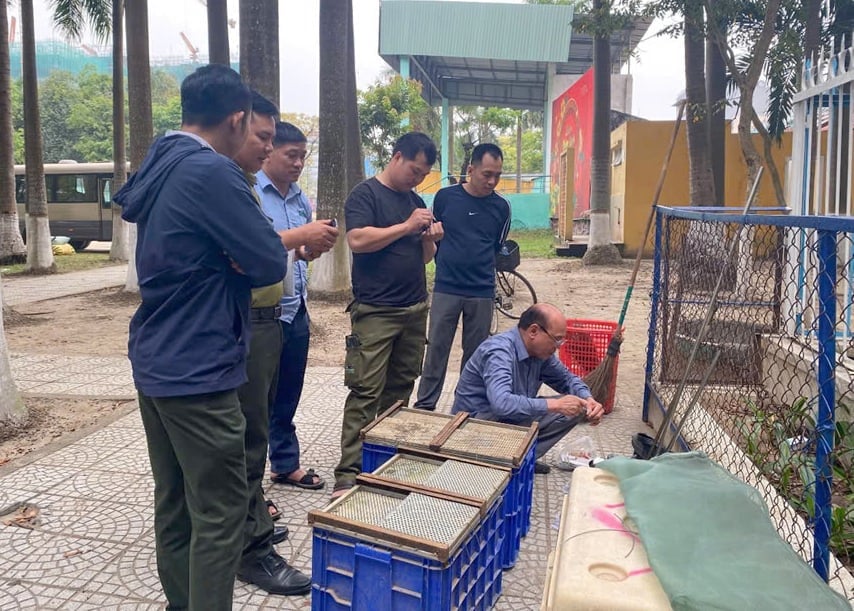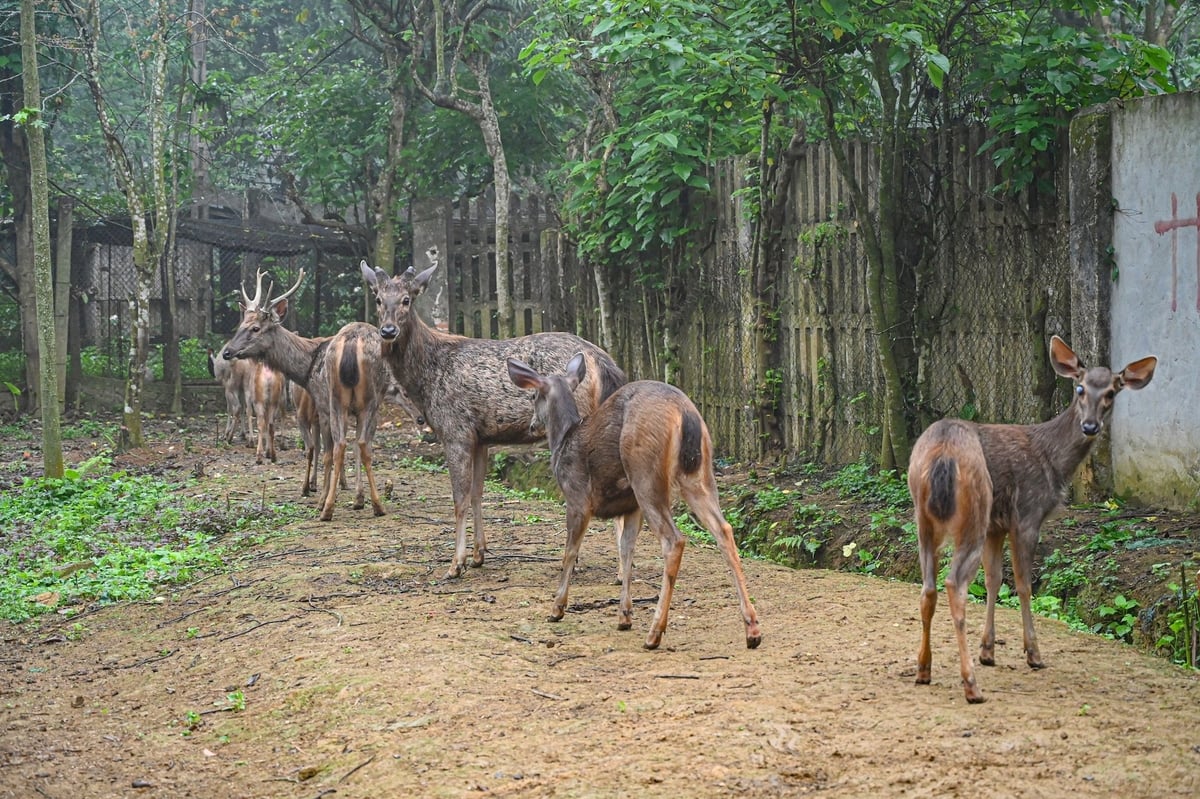December 7, 2025 | 21:47 GMT +7
December 7, 2025 | 21:47 GMT +7
Hotline: 0913.378.918
December 7, 2025 | 21:47 GMT +7
Hotline: 0913.378.918

Authorities carried out the handover and reception of the wild animals. Photo: Phu Cuong.
On the morning of April 11, with technical support from the Wildlife Conservation Center of Vietnam and the Da Nang City Forest Protection Department, the rescue team from Cuc Phuong National Park safely transferred 18 individuals of endangered and rare wild animals from Thanh Khe District, Da Nang City to the Rescue, Conservation, and Organism Development Center of Cuc Phuong National Park.
The 18 wild animals included: 12 Sambar deer (Rusa unicolor), 2 Northern pig-tailed macaques (Macaca leonina), 3 Stump-tailed macaques (Macaca arctoides), and 1 Indian python (Python molurus).
Mr. Le Manh Hung, Deputy Head of the Da Nang Forest Protection Department, stated: “These 18 wild animals were handed over by the Thanh Khe District People's Committee. We chose to entrust them to Cuc Phuong National Park with the goal of sharing and supplementing genetic resources. It is also part of our effort to prepare the healthiest wild individuals to support future plans for the rewilding of some endangered species that are at risk of extinction in the wild.”

The wild animals were brought to Cuc Phuong National Park. Photo: Phu Cuong.
Mr. Le Phuong Trieu, Deputy Director of Cuc Phuong National Park, stated that currently, many organizations and individuals are transferring rare and precious wild animals to Cuc Phuong’s Rescue and Conservation Center in particular, and to conservation facilities across the country in general. This is a positive sign, indicating that the government's efforts in wildlife conservation are being widely spread and increasingly embraced by the community.
According to Mr. Trieu, transferring wild animals to facilities that meet the necessary conditions for care and conservation is not only an act of responsibility in the conservation field but also carries profound humanitarian significance. It offers many wild animals the chance to return to their natural habitats.
Cuc Phuong National Park is Vietnam’s first national park and is known as the “protection capital” of the country. The park is currently home to thousands of individuals belonging to various endangered and rare wildlife species, where they are being cared for, nurtured, and protected.
The conservation programs at Cuc Phuong are of regional and global significance. Some notable ones include the Endangered Primate Conservation Program, the Turtle Conservation Program for terrestrial and freshwater turtles, and the Carnivore and Pangolin Conservation Program.
With a nearly 200-hectare semi-wild enclosure area, the park aspires to be an ideal haven for rescue, rehabilitation, care, and long-term conservation, offering a chance at “revival” for many individual wild animals.
Translated by Kieu Chi

(VAN) After three years, Project FST/2020/123 collected approximately 3,000 insect specimens, classified them into about 50 morphological groups, and identified around 40 species, including several new species.
/2025/12/01/0509-2-175427_206.jpg)
(VAN) Emission-reducing coffee areas in Lam Dong have entered the new crop with stable yields, improved quality, and a remarkably enhanced cultivation environment.

(VAN) The Institute of Agricultural Sciences for Southern Vietnam (IAS) marked its 100th anniversary in Ho Chi Minh City, celebrating a century of growth as a leading institute contributing significantly to Viet Nam’s agricultural development.

(VAN) An increasing number of livestock farms are using biogas generators to create a source of renewable electricity, helping to save costs and mitigate environmental pollution.

(VAN) Small changes in rice cultivation, from irrigation methods and straw collection to input management, are paving a new way for Vietnam's agriculture in the journey toward emission reduction.

(VAN) With the project of converting biogas into renewable electricity, Australia is both helping pig farms reduce their energy costs by up to 25% and contributing to environmental protection.
![Hue aims for Net Zero: [1] Initial steps from green transportation](https://t.ex-cdn.com/nongnghiepmoitruong.vn/608w/files/huytd/2025/11/28/0853-anh-6-giao-thong-xanh-hue-094717_940-153724.jpg)
(VAN) For sustainable development, Hue City is implementing many solutions to promote green transportation, which is an important initial step on the journey to building a Net Zero Hue.